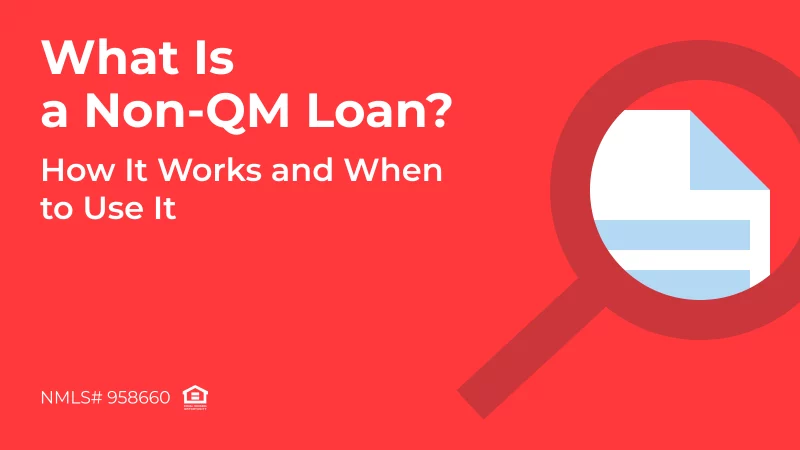![Second Mortgages vs. Home Equity Lines of Credit (HELOCs) [2024 Update] 2nd mortgage vs heloc blog cover](https://admortgage.com/wp-content/uploads/Blog-AI-in-Mortgage-Brokerage-680x400-1-1-680x400.png)
Two common financing options that homeowners may consider when acquiring a new property are second mortgages and Home Equity Lines of Credit (HELOCs). While both involve tapping into the equity of a home, they differ in several key ways. In this blog post, we’ll explore the differences between these two loans and help your clients decide between a 2nd mortgage vs HELOC.
This article was originally published on Jun 14, 2023.
What is a Second Mortgage?

Second Mortgage:
Solutions for brokers!
- Up to 85% CLTV
- $500K max loan, up to 50% DTI
- No prepay penalties
Expand Your Offerings — Contact Us Today!
Discover ProgramSecond mortgage is a loan that is taken out against a property that already has an existing mortgage. It’s called a “second” mortgage because it’s subordinate to the first mortgage, meaning that the first mortgage takes priority in case of default or foreclosure. Second mortgages are typically used to borrow a lump sum of money and are often used for specific purposes such as home renovations, debt consolidation, or large expenses like medical bills or education costs.
What is a HELOC?
Home Equity Line of Credit (HELOC) is a revolving line of credit that is also secured by the home equity. HELOCs allow homeowners to borrow up to a certain percentage of their home’s appraised value, minus the amount owed on their first mortgage.
HELOCs work more like a credit card, where borrowers can draw funds as needed up to a predetermined credit limit and only pay interest on the amount borrowed. They are commonly used for ongoing expenses. These include home improvements or as a source of emergency funds.
2nd Mortgage vs HELOC: Key Differences
Interest Rates and Payments
One of the key differences between second mortgages and HELOCs is the way interest rates and payments are structured.
Second mortgages typically have a fixed interest rate, which means that the interest rate remains the same throughout the life of the loan. This provides borrowers with predictability and stability in their monthly payments. Second mortgages are usually repaid in installments, with borrowers making regular payments of both principal and interest over a set term, usually 10 to 30 years.
HELOCs, on the other hand, typically have a variable interest rate that is based on a benchmark index, such as the prime rate, plus a margin. This means that the interest rate on a HELOC can change over time, leading to fluctuating monthly payments.
Additionally, HELOCs typically have two phases: the draw period and the repayment period.
During the draw period, which is usually 5 to 10 years, borrowers can access funds and are only required to make interest payments.
After the draw period ends, the repayment period begins, during which borrowers are required to make both principal and interest payments. This can result in higher monthly payments during the repayment period compared to the draw period.
Flexibility and Access to Funds
Another important difference between second mortgages and HELOCs is the flexibility and access to funds.
Second mortgages provide borrowers with a lump sum of money upfront, which they can use for a specific purpose. Once the loan is disbursed, borrowers cannot access additional funds from the second mortgage unless they apply for a new loan. However, borrowers have the advantage of knowing exactly how much they will receive and can plan their expenses accordingly.
On the other hand, HELOCs provide borrowers with a revolving line of credit. It allows them to borrow funds as needed, up to the credit limit, during the draw period. This flexibility can be advantageous for homeowners who may have ongoing or changing financial needs. Borrowers can choose when and how much to borrow, and they only pay interest on the amount they borrow. However, it’s important to note that the credit limit and availability of funds can change during the draw period, as the home’s appraised value and the outstanding balance on the first mortgage can fluctuate. Once the draw period ends, borrowers can no longer borrow from the HELOC and must start repaying both principal and interest during the repayment period.
Fees and Closing Costs
Looking for a suitable loan program?
Choose among 20+ programs and get
a detailed loan calculation
When it comes to fees and closing costs, both second mortgages and HELOCs may come with associated costs that borrowers should be aware of.
Second mortgages typically involve closing costs. They can include fees for appraisal, title search, credit check, attorney fees, and other administrative costs. These costs can vary depending on the mortgage lender and the loan amount, and they can add up significantly. Borrowers should consider these costs when evaluating the overall cost of a second mortgage.
HELOCs may also come with closing costs. They can include similar fees as second mortgages (appraisal, title search, and attorney fees).
Some HELOCs may also have annual fees, maintenance fees, or transaction fees. They depend on the lender and the terms of the loan. It’s important for borrowers to carefully review the terms and fees associated with a HELOC to fully understand the costs involved.
Risk and Impact on Credit Score
Both second mortgages and HELOCs are secured loans, which means that they are backed by the borrower’s home as collateral. This means that if the borrower defaults on the loan, the lender has the right to foreclose on the home and sell it to recover the outstanding balance.
However, there are some differences in terms of risk and impact on credit score.
With a second mortgage, the lender has the first lien position. It means that in case of foreclosure, the first mortgage will be paid off before the second mortgage. This can result in higher risk for the lender of the second mortgage, as they may not fully recover their loan amount in case of default. As a result, second mortgages may come with higher interest rates compared to first mortgages, to compensate for the higher risk.
Both second mortgages and HELOCs can impact the borrower’s credit score. Late payments or default on either type of loan can negatively affect the borrower’s credit score. Please consider borrowers’ financial situation and ability to repay the loan before opting for either option.
2nd Mortgage vs HELOC: Which Option Is Right for Your Clients?
It’s important to evaluate your clients’ financial situation and goals to determine which option is right for them. Here are some factors to consider when helping your clients decide between a 2nd mortgage vs HELOC:
Purpose
If your clients have a one-time expense (a home renovation or debt consolidation), a second mortgage may be a more suitable option. It provides a lump sum of money upfront.
Flexibility
If borrowers have ongoing or changing financial needs, such as home improvements or emergency funds, a HELOC may provide more flexibility. This way they can borrow funds as needed during the draw period.
Interest Rates and Payments
Do your clients prefer stability in their monthly payments? If yes, a second mortgage with a fixed interest rate and regular installment payments may suit better. If they are comfortable with potential fluctuations in interest rates and payments, a HELOC with a variable interest rate and draw period could also work.
Closing Costs and Fees
Closing costs and fees associated with both options should be carefully considered. Second mortgages typically have higher upfront closing costs, while HELOCs may have ongoing fees. Your clients’ financial situation and budget should be taken into account when assessing the overall costs of each option.
Credit Score Impact
Both second mortgages and HELOCs can impact your clients’ credit score. Late payments or default on either type of loan can negatively affect their credit score. It’s important to educate your clients about the potential impact on their credit score and help them understand the importance of timely payments and responsible borrowing.
Long-Term Financial Goals
Lastly, consider your clients’ long-term financial goals. Will a second mortgage or a HELOC help them achieve their financial objectives? Will it align with their overall financial plan? Helping your clients evaluate the long-term implications of each can guide them to the right decision.

Struggling with
a loan scenario?
Get a solution in 30 minutes! Fill out
the short form and get your personal offer
Conclusion
In conclusion, second mortgages and HELOCs are two types of loans that give homeowners access to home equity. They share some similarities, such as being secured by the home and using home equity as collateral. However, they also have key differences in terms of structure, flexibility, fees, risk, and credit score impact.
For mortgage brokers it’s crucial to assess the clients’ financial situation, goals, and risk tolerance. Only this can determine which option, if any, is right for them. Educate your clients about the pros and cons of both second mortgages and HELOCs. Provide them with the information they need so they can choose an option that best fits their financial goals.


